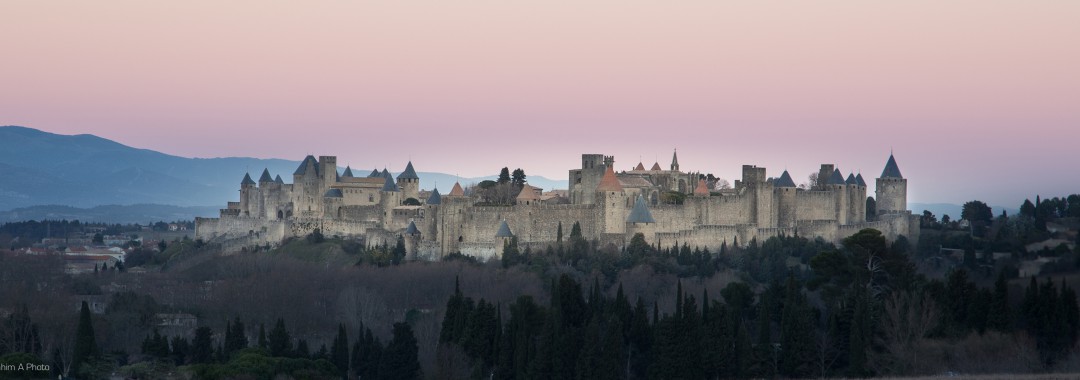Carcassonne, is a provincial town of 47000 inhabitants, separated by the river Aude into 2 parts (the low town "la Bastide" and the high town "la Cité "). The town is famous for it’s Medieval City and the Canal du Midi, both classified as UNESCO World Heritage sites. It is located in the south of France, 80 kilometers from Toulouse and close to the Pyrenees, the Mediterranean Sea and the Spanish border. During its 2000 years of history Carcassonne has been a place passage but also a coveted strategic cross-roads connecting the Atlantic Ocean to the Mediterranean Sea and the Massif Central to the Pyrenees. Its climate is characterized by hot and dry summers, mild and sunny autumns, with frost and snow rare even in winter. Rain is equally distributed from October to May.
Laden with history, Carcassonne has been the seat of multiple cruel invasions: the Volques, Tectosages, Romans, Visigoths, and Saracens. In the Middle Ages, it was a stronghold of Catharism. Regarded as a hotbed of heresy by Pope Innocent III, it was subjected to the double blow of the Crusades and the Inquisition. In the 14th century, Carcassonne was the largest textile-producing centre in the kingdom and exported its products throughout Europe. During the centuries that followed, the town suffered the plague, the Hundred Years war, the devastation of the Black Prince (Le Prince Noir), religious wars and the French Revolution. It was only in the 19th century, as interest in historic monuments and their restoration grew, that the town was revived. During the 20th century, the town and the surrounding area have experienced the winemaker’s revolt, two world wars and the hazards of contemporary living. The main economic resources of the region are currently tourism, craftsmanship and viticulture.

